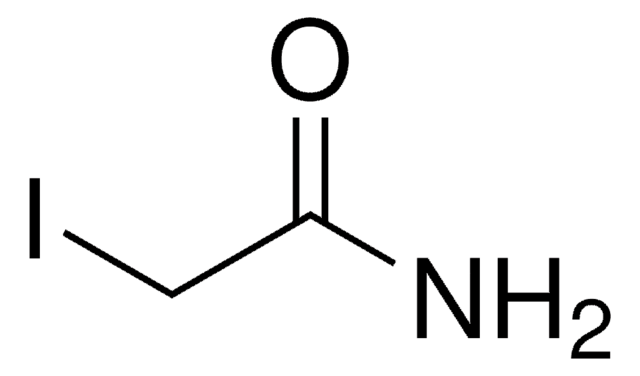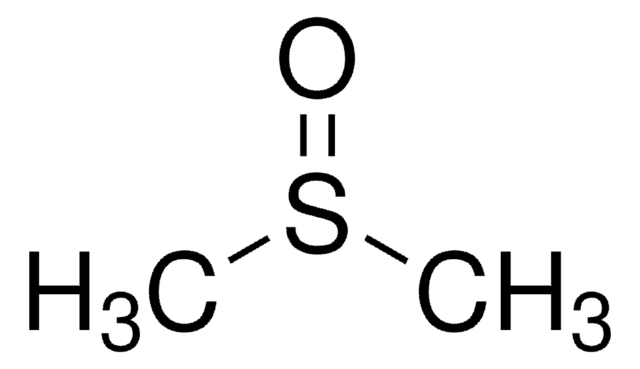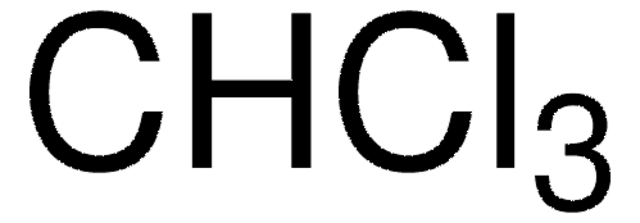1.00016
Acetonitrile
≥99.9% (GC), suitable for UV/Vis spectroscopy, Uvasol®
Synonym(s):
ACN, Cyanomethane, Ethyl nitrile, Methyl cyanide
About This Item
97 hPa ( 20 °C)
Recommended Products
Product Name
Acetonitrile, for spectroscopy Uvasol®
vapor density
1.41 (vs air)
Quality Level
vapor pressure
72.8 mmHg ( 20 °C)
97 hPa ( 20 °C)
Assay
≥99.9% (GC)
form
liquid
autoignition temp.
524 °C
973 °F
expl. lim.
16 %
technique(s)
UV/Vis spectroscopy: suitable
impurities
≤0.0001 meq/g Alkalinity
≤0.0002 meq/g Acidity
≤0.01% Water
evapn. residue
≤0.0002%
color
APHA: ≤10
transmittance
190 nm, ≥20%
195 nm, ≥60%
200 nm, ≥90%
215 nm, ≥95%
230 nm, ≥98%
refractive index
n20/D 1.344 (lit.)
bp
81-82 °C (lit.)
mp
−45 °C (lit.)
transition temp
flash point 2 °C
density
0.786 g/mL at 25 °C (lit.)
UV absorption
λ: 190 nm Amax: ≤0.70
λ: 195 nm Amax: ≤0.22
λ: 200 nm Amax: ≤0.05
λ: 215 nm Amax: ≤0.02
λ: 230 nm Amax: ≤0.01
format
neat
storage temp.
2-30°C
SMILES string
CC#N
InChI
1S/C2H3N/c1-2-3/h1H3
InChI key
WEVYAHXRMPXWCK-UHFFFAOYSA-N
Looking for similar products? Visit Product Comparison Guide
General description
Application
- Anthocyanin Separation: Acetonitrile is employed in high-performance liquid chromatography (HPLC) for the selective separation of anthocyanins. Studies have demonstrated the benefits of replacing acetonitrile with methanol in the mobile phase to control the selectivity and improve the resolution of anthocyanin separation, providing a more sustainable approach to chromatographic analysis (Deineka et al., Journal of Analytical Chemistry, 2021).
- Detection of α-Amino Acids: Acetonitrile is used in the development of chemiluminescence methods for detecting α-amino acids. A mixed solution of water, acetonitrile, and ethyl acetate has been shown to enhance the sensitivity and accuracy of amino acid detection, making it a valuable tool for biochemical and clinical analyses (Kan et al., American Journal of Analytical Chemistry, 2020).
- Electrochemical Detection of Biomarkers: Acetonitrile is utilized in the electrochemical detection of biomarkers such as 5-formyluracil. Labeling with (2-benzimidazolyl) acetonitrile enhances the selectivity and sensitivity of the detection, making it an important method for biomedical research and diagnostics (Tang et al., Analytical Chemistry, 2021).
- Ligand-Assisted Excitation of Europium Complexes: Acetonitrile is used in studying the ligand-assisted excitation of Eu(III) complexes. The interaction of europium complexes with xenon difluoride in acetonitrile solution provides insights into their photophysical properties, which are essential for developing luminescent materials for various applications, including lighting and display technologies (Masyagutova et al., Journal of Fluorine Chemistry, 2024).
Other Notes
Legal Information
related product
Signal Word
Danger
Hazard Statements
Precautionary Statements
Hazard Classifications
Acute Tox. 4 Dermal - Acute Tox. 4 Inhalation - Acute Tox. 4 Oral - Eye Irrit. 2 - Flam. Liq. 2
Storage Class Code
3 - Flammable liquids
WGK
WGK 2
Flash Point(F)
35.6 °F - closed cup
Flash Point(C)
2.0 °C - closed cup
Regulatory Information
Certificates of Analysis (COA)
Search for Certificates of Analysis (COA) by entering the products Lot/Batch Number. Lot and Batch Numbers can be found on a product’s label following the words ‘Lot’ or ‘Batch’.
Already Own This Product?
Find documentation for the products that you have recently purchased in the Document Library.
Our team of scientists has experience in all areas of research including Life Science, Material Science, Chemical Synthesis, Chromatography, Analytical and many others.
Contact Technical Service




